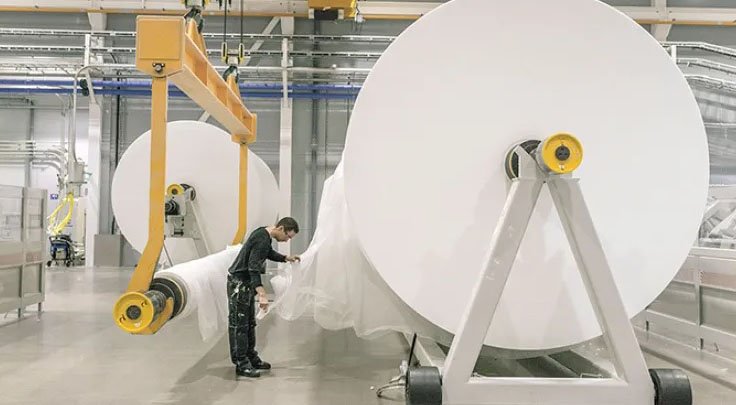-300x192-cropped.jpg)
Kordsa receives two global awards
North American growth exceeded US real GDP for the seventh consecutive year in 2020.

30th April 2021
Innovation in Textiles
|
Cary, NC, USA
INDA, based in Cary, North Carolina, has just published the eighth edition of its annual North American Nonwovens Supply Report for its members, which reveals that in 2020, North American nonwovens capacity increased to 5.552 million tonnes,
This is a net increase of 0.7% – 39,000 tons – over 2019, reflecting not only the addition of new lines, but also machine productivity increases and some line closures.
In the last three years, 51 lines have come online and 22 lines have been shut-down. Furthermore, as a result of the pandemic, some of the new line additions planned for 2020 have shifted to 2021.
During 2020, some end-use markets were completely shut-down for a few months, notably building and vehicle construction, and other end-uses were operating full-out – if they could. Producers were challenged by workforce and transportation issues. As a result, the overall operating rate only increased one-percentage-point over 2020. Additionally, as the operating rate is based on tonnage, the increased demand for lighter-weight materials – medical apparel and fine-fibre meltblown – affected the total tonnage output, as some lines were running full-throughput of surface area, but not tonnage.
North American imports and exports, in tonnage, increased 51.2% and 14.2% respectively year-over-year. Imports were led by China (+97,200 tonnes, +121%) and India (+11,000 tonnes, +37%). Even with the significant shifts in North American trade dynamics, nonwovens tend to stay where they are produced, with the net trade balance (imports less exports) accounting for less than 10% of the region’s capacity.
Based on extensive research, producer surveys and interviews with industry leaders, the report provides an overall view of North American supply, including the key metrics of capacity, production and operating rates, in addition to regional trade, through the year 2020.
Strategic planning
“One of INDA’s key services is to provide valuable data and actionable industry information to enhance decision making in our capital-intensive industry,” said INDA president Dave Rousse. “This report is the most complete and accurate portrayal for both rolled goods for sale and also material produced for internal consumption in North America. It also presents the industry operating rates in key areas – the essential element for strategic planning and business investment decisions.”
The report – and the quarterly INDA Market Pulse and monthly Price Trends Summary – are provided to the approximately 375 INDA member companies and associates as part of their membership. The data gathered for this annual report serves as the foundation for the biannual North American Nonwovens Industry Outlook, which was recently published in December of 2020.
“This is a great time to be in nonwovens,” said Brad Kalil, INDA’s director of market intelligence and economic insights. “We are in a business that is expanding faster than the economy as production growth exceeded US real GDP for the seventh consecutive year. Production growth also exceeded capacity growth for the fourth consecutive year. The overall operating rate for the industry also improved for the fourth consecutive year. Lastly – and most importantly – we are in a business that protects and improves people’s lives. This has been brought to the forefront recently with the benefits of protective medical apparel, respirators, face masks, and disinfecting wipes, now known by all. The nonwovens industry has responded to the pandemic and will continue to provide materials that keep the surfaces we touch clean, make the air we breathe safe, and provide a barrier to keep our bodies safe.”

Business intelligence for the fibre, textiles and apparel industries: technologies, innovations, markets, investments, trade policy, sourcing, strategy...
Find out more